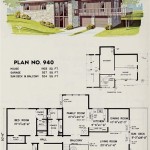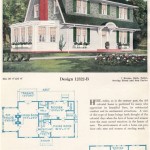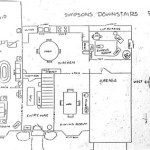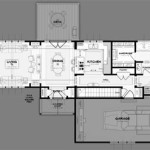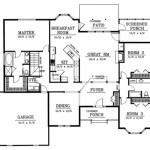Essential Aspects of SketchUp Floor Plans 2D
SketchUp is a powerful 3D modeling software that can also be used to create accurate and professional-looking 2D floor plans. Floor plans are essential for any construction or renovation project, as they provide a clear visual representation of the layout and dimensions of a space. With SketchUp, you can create 2D floor plans quickly and easily, and you can also use the software to generate 3D models of your designs.
Getting Started with SketchUp Floor Plans 2D
To get started with SketchUp Floor Plans 2D, you will need to create a new project. Once you have created a new project, you can begin by drawing the walls of your floor plan. To do this, select the Line tool from the toolbar and click on the starting point of the wall. Move the cursor to the endpoint of the wall and click again to create the line. You can continue adding walls to your floor plan until you have created the complete outline.
Adding Doors and Windows
Once you have created the walls of your floor plan, you can add doors and windows. To add a door, select the Door tool from the toolbar and click on the location where you want to place the door. To add a window, select the Window tool from the toolbar and click on the location where you want to place the window. You can then specify the size and style of the door or window.
Adding Furniture and Fixtures
Once you have added doors and windows to your floor plan, you can begin adding furniture and fixtures. To do this, select the Furniture tool from the toolbar and click on the location where you want to place the furniture. You can then specify the type of furniture and the size and style. You can also add fixtures such as sinks, toilets, and appliances.
Creating a 3D Model
Once you have completed your 2D floor plan, you can use SketchUp to create a 3D model of your design. To do this, select the 3D Model tool from the toolbar and click on the face of the floor plan. SketchUp will then create a 3D model of your design. You can then view the model from any angle and zoom in to see the details.
Exporting Your Floor Plan
Once you have created your floor plan and 3D model, you can export them to a variety of file formats. This allows you to share your designs with others or use them in other software programs. To export your floor plan, select the File menu and then select Export. You can then choose the file format that you want to export to.
Conclusion
SketchUp Floor Plans 2D is a powerful tool that can be used to create accurate and professional-looking floor plans. The software is easy to use and allows you to quickly and easily create 2D and 3D models of your designs. With SketchUp Floor Plans 2D, you can create floor plans for any type of project, from small home renovations to large commercial buildings.

Plan View 2d Sketchup For Web Community

2d Floor Plans Without Drawing The 3d Object Pro Sketchup Community

2d Drawing In Sketchup Popular Woodworking

Layout Floor Plan Pro Sketchup Community

Plan View 2d Sketchup For Web Community

Sketchup 2d Floor Plan

Sketchup Floor Plan Tutorial For Beginners

How To Automatically Convert Sketchup Model Into 2d Floorplan With Measurement Requests Discussion Community

Floor Plans Sketchup Hub

Adding 2d Content To Vector Plans Sketchup Tutorial Linkedin Learning Formerly Lynda Com

